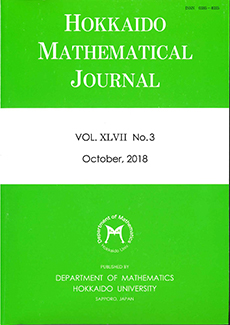Abstract
Adaptive networks are emerging a lot of fields of science, recently. In this paper, we consider about a mathematical model for adaptive network made by the plasmodium. The organism contains a tube network by means of which nutrients and signals circulate through the body. The tube network changes its shape to connect two exits through the shortest path when the organism is put in a maze and food is placed at two exits. Recently, a mathematical model for this adaptation process of the plasmodium has been proposed. Here we analyze it mathematically rigorously. In ring-shaped network and Wheatstone bridge-shaped network, we mainly show that the globally asymptotically stable equilibrium point of the model corresponds to the shortest path connecting two special points on the network in the case where the shortest path is determined uniquely. From the viewpoint of mathematical technique, especially in the case of Wheatstone bridge-shaped network, we show that there is a simple but novel device used here by which we prove the global asymptotic stability, even when Lyapunov function cannot be constructed.
Citation
Tomoyuki MIYAJI. Isamu OHNISHI. "Mathematical analysis to an adaptive network of the Plasmodium system." Hokkaido Math. J. 36 (2) 445 - 465, May 2007. https://doi.org/10.14492/hokmj/1277472812
Information





